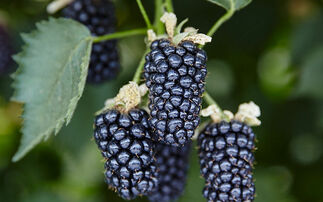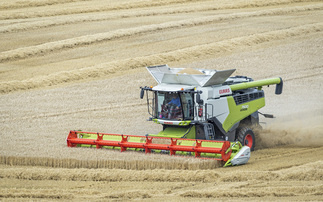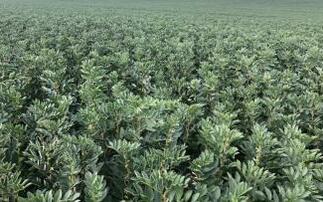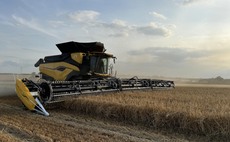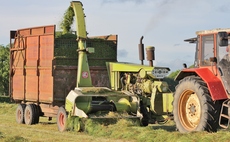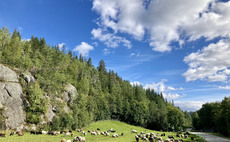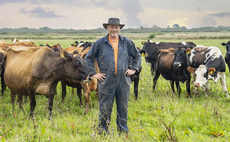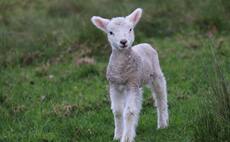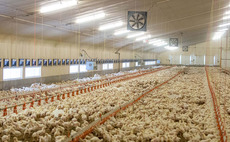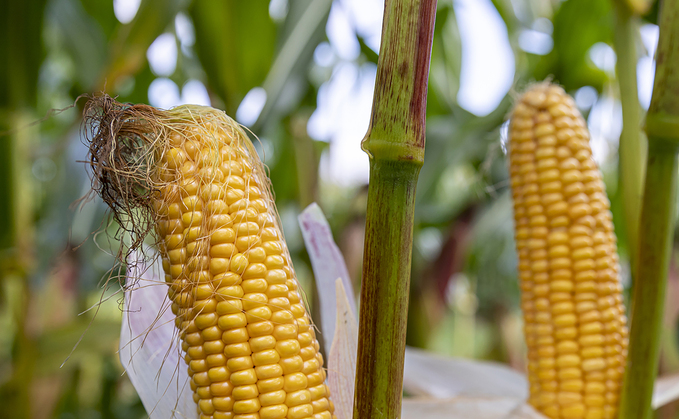
Insufficient clamp space has left some farmers considering harvesting maize as grain rather than forage, which has the dual benefit of producing a high-value concentrate livestock feed and taking up far less space than maize silage in the clamp.
Derbyshire-based agricultural contractor Lee Gilbert says that by the last week in September, several of his customers had called him to say their silage pits were almost full and asked him to bring the combine rather than the forage harvester.
He says: "This is very early in the season to have had so many calls about grain maize, but everyone seems to be struggling for space.
"We have harvested a lot of grain maize in the past, having bought the header for our combine in a difficult year when we were struggling to travel across wet ground with foragers.
"We have a four-wheel drive combine and managed to salvage about 1,500 acres of maize that season," he says.
Read more: Maize silage results 'encouraging'
Harvesting maize as grain
But this year, it is suggested some growers could plan to harvest a proportion of their maize as grain. This can be crimped with a salts-based product containing human food grade preservatives, such as CrimpSafe 300, and stored in a clamp or plastic tube. It can then be used as a high-value concentrate feed, or as feedstock for anaerobic digestion.
Michael Carpenter, technical director with feed and forage preservation specialists Kelvin Cave, says: "If livestock producers already have plenty of forage in stock, there is a high value to producing homegrown concentrate for use on-farm.
"Producers are increasingly seeking to reduce their requirement for purchased feed, and crimping homegrown maize is an excellent way of doing this. Crimped maize is a valuable ingredient in diets for either dairy, beef or sheep, typically with a dry matter [DM] of 65-75 per cent, metabolisable energy of 14.0-14.5MJ/kg DM and starch of 68-72 per cent.
"As a fermented product, it is more rumen-friendly than dried, rolled maize or cereals, and contains a high proportion of bypass starch.
"Each acre of grain maize grown will also take less than a fifth of the space of maize silage, which will solve most producers' problems with storage."
Read more: Managing wholecrop and maize
Operational benefits
Mr Gilbert adds there are further operational benefits to be gained from harvesting grain maize, which, despite the later harvest, causes significantly less ground damage than forage harvesting in wet conditions.
He says: "Because the stem is shredded and remains on the ground in front of the combine, it creates a lovely mat, which improves travelling and keeps the combine's tyres clean. We get nine tonnes of grain in our combine's tank and can take it to the gateway to load trailers, which eliminates mess on the road."
Read more: Potential bumper year for 2023 maize crop
Fertiliser value
The fertiliser value of the maize leaf and stem will also provide phosphate and potash, and add organic matter and structure to the soil.
However, a word of caution is offered about the condition and variety of crop, which seed specialists say should be ‘leaning towards' a grain variety.
Sean Lovegreen from Nickerson says: "Crimping could be an option for crops which are advancing and senescing, but many crops will not reach that stage. If you are using an out-and-out forage variety and have applied plenty of nitrogen, the crop will stay greener for longer and may not desiccate sufficiently to harvest as grain.
"It is essential to talk to your agronomist and assess the crop on an individual basis, as it is impossible to give blanket advice."
However, for those who successfully harvest grain maize, there is not only an energy-dense feed to be produced, which will keep in a clamp for over a year, but properly crimped grain can be traded from farm to farm.




